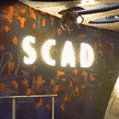 What Are The Doldrums?
What Are The Doldrums?Fight.Boredom's Doldrums is the Internet’s newest competition for badly designed, poorly written, unnavigable, unmarketable, and boring websites. Reflecting more than just the tremendous growth of the Internet as a tool for business and communication, the Doldrums explore the unpleasant and unintelligible reality of the web and web design.
This year's winning sites are more than just ugly sites – they represent the very worst of the Web. The winning sites have no excuse for bad interactive design – corporate websites with impossible navigation and endless, incomprehensible business-speak; horribly designed web-based service sites with unusable features; and overwhelming high-bandwidth tragedies so ill-conceived that their very existence should be called into question.
We placed a call for entries and you responded in kind: You sent us your boring, your ill conceived, your poorly executed. You sent us your disasters, your train-wrecks, your blatant knock-offs. You submitted the sites that won the inaugural Fight.Boredom Doldrums!
Why did we do this? To point out those critical errors which ruin websites and cripple e-commerce. Fight.Boredom’s editors, staff, and judges have critiqued each winning site – noting both their failings and recommending design solutions. Winning websites were selected, from among the publicly-submitted address by a panel of graphic artists, web designers, business content writers, and digital art educators. Any interactive project created for digital distribution on the World Wide Web was eligible.
Judgment CriteriaOur judges were asked to measure submitted websites by the following criteria:
- Design. How good is the site's visualization and graphic design? Is it over- or under-whelming? Is it appropriate?
- Navigation. Is the site easily navigable? Does the navigation make sense? Is it consistently applied?
- Usability. How long does the site take to download? Are there significant browser compatibility issues? Broken links? Distracting sounds?
- Understandability. Does the site and its descriptive language make sense? Can you tell what the site is for? What they do?
- Stickiness. Do you want to stay on the site? Do you want to go back to it later?
- Irony. Keeping in mind what the site is promoting, how well do they do it? Does the site contradict itself or its stated purpose?
 First Place: Kevin & Kennedy Associates
First Place: Kevin & Kennedy AssociatesSins: Design, Navigation, Usability, Understandability, Irony
Visit the website and judge for yourself...The very worst of this year's worst – the winner of 2005 Doldrums is the website of Indianapolis-based Kevin Kennedy & Associates!
Take a lesson from this website's bevy of mistakes so you can spot these mistakes before they are made on your website.
Design"Get your pre-generated website here!" cried one judge on viewing Kevin & Kennedy Associates. Many of this site's critical failures stem from weak, seemingly "out-of-the-box" graphic design. If not drawn from an inexpensive template, than the site certainly looks like it is.
The website manages to be both over- and underwhelming at the same time. The variety of clashing colors and gratuitous visual effects (namely the distracting radial gradient inside most buttons and the shadowed bevel effect applied inconsistently throughout the website) change a simple left-hand-navigation layout into a visually nauseating graphic experience. This is a common mistake online – the vain and rarely successful effort to make a website "spiffy".
NavigationThe navigation on the Kevin and Kennedy Associates website is a total mess. One of the most common remarks made by the Doldrums' judges was in regard to the cobbled together navigation running along the top of the site and stacked on the left. While the positioning of the navigation would be familiar to most web users, there are no visual cues delineating different categories of links from one another – their position and graphic treatment appear random.
And there are simply too many links taking up too much room, all down the length of the page. In fact, the only positive feature of the site's navigation that comes to mind is the presence of the "Back to Top" button at the bottom of most pages – a necessary addition to pages which take so very long to scroll down through.
Usability & UnderstandabilityThis site has too much content – it took one judge 36 rolls of their mouse's scroll wheel to navigate down the full length of the homepage!
Upon arrival, it is very difficult to determine two important features of the site: What does this company do and which links are the ones of most importance to me?
One judge reacted with particular frustration, saying of the site: "[There is] too much text. Client listings aren't the same as client references. Then links within links. You get a page of text that tells you nothing and then a new slew of links that hop you all over. In the end you still know nothing."
Indeed, commented another viewer, "It seems the content of the site was designed more for search engines than for user consumption. I have no idea what much of the site was either talking about or linking to – and I'm certainly not going to follow a vague link to who-knows-where."
Perhaps most critically, contact information is placed well below the fold – the vertical span of a standard computer screen. Either below the left-hand navigation or at the bottom of the page, contact information, especially the phone number, is hard to find and not readily copy-able. This is both poor design and, to some of our judges, suspicious.
IronyThe combination of poor design elements, overflowing content, and incomprehensible navigation creates an environment on the Kevin & Kennedy Associates webpage to which one Doldrums judge reacted: "This site does not say 'trustworthy engineer' to me. It says 'scam to take your money'. I'd jump as soon as it loaded."
How to Fix this WebsiteRedesign and rewrite the site with the web in mind – and with the user in mind, not search engines. One judge suggested: "Way too much content, but that was to be expected. It's a 'Jack of all trades' site. Overwhelming content. Recommendation: Less is best, especially on a website, and tell it to me like I'm 5 years old. Keep it simple. My ears popped from the pressure of scrolling down that far in content. "
Content needs to be minimized and streamlined to the most critical points, at least on the homepage and other introductory pages. The navigation should be reduced and clearly organized, allowing the website's users to more intelligently select their path through the website.
Remember: If your website's users don't find what they're looking for in the first few seconds of their visit, they will likely leave. And with good reason.
fb
 Second Place: CapturePlanning.com
Second Place: CapturePlanning.comSins: Design, Usability, Understandability, Irony
Visit the website and judge for yourself...The 2005 Doldrums' second place winner – a planning website that proves the importance of such basic planning activities as proofreading and browser compatability review.
Take a lesson from this website's bevy of mistakes so you can spot these mistakes before they are made on your website.
Design & UsabilityWhile one judge applauded the CapturePlanning layout for attempting to manage its large volume of content with columns and a structured layout, several other judges found issues with the site's tiny typography. One judge explained: "The font is minuscule and frankly if I were browsing I'd be moving right along to another provider. I'm 30 with good vision. I shouldn't need a magnifying glass to read the page."
This website's text display represents a massive platform conflict – a radically different appearance on PC and Mac broswers. Indeed, one Doldrums' judge experienced this conflict between different browsers on the same PC. CapturePlanning makes use of cascading stylesheets using non-standard fonts and variable font-sizes, rendering the website's text differently for each user (relative to a user's installed fonts and screen settings). This creates a highly variable user experience. To prove this point, while many of our judges complained about the tiny text sizes on this site, one complained of their enormity!
UnderstandabilityLike the Kevin & Kennedy Associates website, the CapturePlanning suffers from a lack of content direction and brevity. One judge commented on this issue, saying: "This site looks like they took every thought they ever had and threw it at the front page."
They went on to add: "[CapturePlanning] is just like every confused business owner I've ever dealt with – give the user everything so they are too confused to realize that you really don't know what you are talking about. There is no succinct message – it's bland, boring, overloaded, and ineffectual!" In frustration with the site's meandering content, another judge added, "Ever heard of planning? Being direct? Hello?"
What's worse, the site is replete with grammatical errors and omissions. "It appears they haven't edited the site – in places words are missing entirely or text formatting doesn't turn off when its clearly done being needed."
IronyThe rambling nature of the site's content stands in ironic contrast to the site's stated purpose and marketed literature. One of the Doldrums' judges described this situation: "I think the site has more content than a lot of the books they’re selling."
How to Fix this Website The CapturePlanning does do some things right – their top navigation is easily expandable and worked in all tested browsers. Additionally, the homepage does make a concerted effort to describe the purpose of the website.
Browser conflicts in the text, however, need to be cleaned up and the appearance of the site needs to be more specifically defined. This could be as simple a fix as defining font sizes as pixel heights in the existing website stylesheets – the fundamental design of the website is not actually flawed. Type sizes need to be large enough to be legible by any user, regardless of their age.
Also, as we witnessed on the Kevin & Kennedy Associates website, the CapturePlanning website suffers most of all from a lack of focus in the text. Content needs to be minimized and streamlined to the most critical points, at least on the homepage and other introductory pages.
fb
 Third Place: Fantastic 4 Movie
Third Place: Fantastic 4 MovieSins: Design, Navigation, Usability, Stickiness
Visit the website and judge for yourself...The 2005 Doldrums' third place winner – a surprising dark horse right out of Hollywood that found the unanimous ire of our judges.
Take a lesson from this website's bevy of mistakes so you can spot these mistakes before they are made on your website.
DesignThis is a visually stunning website, no question about it. It makes great use of production and film photography and attempts to capture some of the comic book feel defined by other film sites, such as those for the X-Men movies. But the overall sensation is of a site unfinished, or, at the very least, thrown together. Uncoordinated navigation elements create an effect one judge described as a "Fantastic flop. I think they ran out of money when this was being created."
Content areas are often small, as well as the image and text content contained therein – an inexplicable aspect of the site given the long load times throughout the website. Indeed, some of the most prominent design features are the loading bars themselves.
Navigation & UsabilityLoading issues represent the greatest sin on the Fantastic 4 website (a debate among the judges about the merits of Jessica Alba as an actress, aside). In combination with inconsistent and sometimes difficult-to-use navigation, this renders the website clunky and hard to use.
"What precisely does 'Oading" mean?' asked one Doldrums judge. "Sometimes the flying flashing bubbles say "loading" other times "oading". After having to chase the flying bubbles of information for a while I got irritated and left."
"Initially I was thinking 'why is this so bad? It's just your average super hero movie site. But it lost me as soon as the flying and the flashing and the slow loading and tiny text and and and..."
StickinessWhile Hollywood websites are often prone to frequent updates to drive traffic back, over and over again, the difficulty in finding this new content and the long load times required to access it inhibit repeat visitation – long load times for various areas of content, even across broadband connections, discouraged all of our judges from revisiting the site except for judging!
Faster loading film sites with a more transparent navigation (the films sites for Star Wars and Hitchhiker's Guide to the Galaxy being recent examples) present much more enjoyable user experiences with less waiting and more interaction.
How to Fix this Website Optimize, optimize, optimize. A website’s download speed can make or break it. Even without adding a low bandwidth non-Flash alternative – which this site absolutely should have – efforts should be made to trim the overall load times. Consider the
Death-to-Download ratio (issue 2003.01), which measure load times in terms of global deaths/second statistics: 29 people died while I waited to access the Fantastic 4 website's homepage across my office's DSL connection!
fb
Honorable MentionsCould we really limit ourselves to just three lemons? Here are a few of the "also-rans" that were just so bad we couldn't exclude them from this year's Doldrums
Celtic InsuranceInterNICPerpetual SystemsTopGallant Partners Toys for Tots
The JudgesFight.Boredom enlisted creative professionals representing various disciplines to judge the 2005 Doldrums
- Hal Greer, Greer Creative. Hal has extensive illustration, design, and brand experience working for a wide range of clients, from Big Five firm's to nationwide corporations and non-profits of all sizes. His design work has been widely recognized, resulting in more than a dozen awards from the Central New York Ad Club and AIGA regional chapters.
- Kristyn McGeehan, Wordsmith Creations. Kristyn is a business and technical writer specializing in commercial writing and designing both classroom and online training materials.
- Patrick Greer and J.D. Jordan, Cloudjammer Studio. J.D. and Patrick have extensive experience in interactive media and graphic design, specializing in creative services for the Internet. They have taught college-level courses in electronic and Internet art, and have judged a succession of student Internet design competitions. fb
 At Cloudjammer, we keep the music playing all day long – you've probably heard the rhythms behind each phone call to our offices. We beat away the silence with a wide variety of the best music available – from classic tunes by Old Blue Eyes and the great Band Leaders to classic rock and the newest indie, brit rock, and hip hop on the market.
At Cloudjammer, we keep the music playing all day long – you've probably heard the rhythms behind each phone call to our offices. We beat away the silence with a wide variety of the best music available – from classic tunes by Old Blue Eyes and the great Band Leaders to classic rock and the newest indie, brit rock, and hip hop on the market. Erykah Badu "I Want You"
Erykah Badu "I Want You" Cary Brothers "Blue Eyes"
Cary Brothers "Blue Eyes" Getz/Gilberto "The Girl from Ipanema"
Getz/Gilberto "The Girl from Ipanema" Origa "Inner Universe (Ghost In The Shell)"
Origa "Inner Universe (Ghost In The Shell)"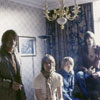 Kasabian "Club Foot"
Kasabian "Club Foot"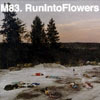 M83 "Run Into Flowers (Midnight F*ck Mix)"
M83 "Run Into Flowers (Midnight F*ck Mix)" Stan Rogers "Barrett's Privateers"
Stan Rogers "Barrett's Privateers" The Shins "The Past And Pending"
The Shins "The Past And Pending"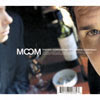 Thievery Corporation "Lebanese Blonde"
Thievery Corporation "Lebanese Blonde"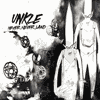 UNKLE "What Are You To Me?"
UNKLE "What Are You To Me?"



